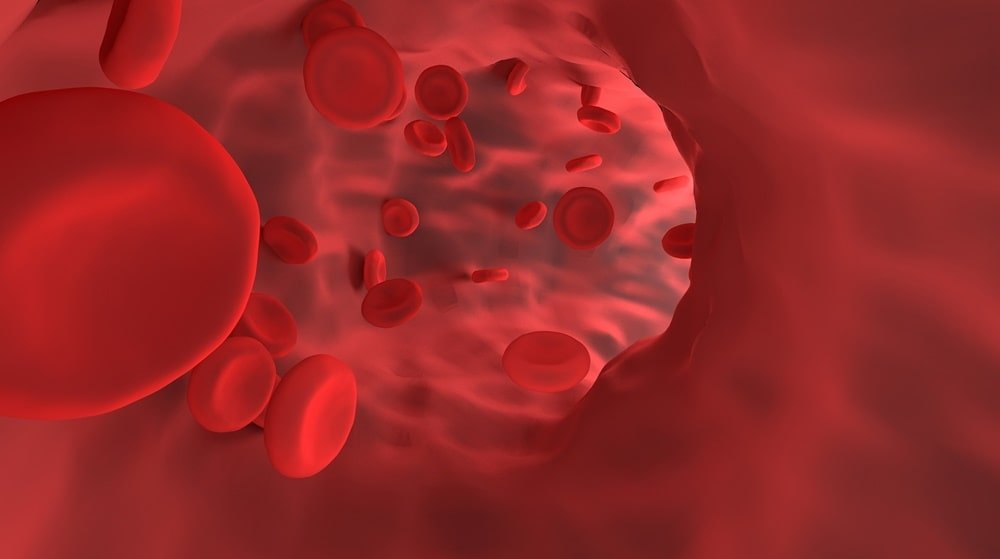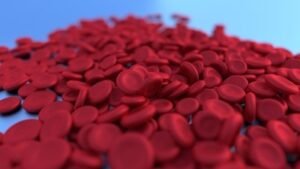
There are many types of anemia, and it has become recently the most common blood disease worldwide.
Perhaps the widespread availability of fast food and malnutrition are major culprits.
Let’s take a look at some of the different types of anemia, their symptoms, and treatment options.
What is Anemia?
It is a pathological condition that occurs when; the total number of red blood cells circulating in the body falls below the standard rate.
Hemoglobin, the main component of red blood cells, is an iron-rich protein.
It binds with oxygen and transports it to all body cells.
It also gives the blood its distinctive red color.
Consequently, anemic patients experience fatigue or shortness of breath because their body organs are not getting enough oxygen to function effectively.
Recently, anemia has become one of the most common blood disorders.
Studies have shown that about a third of the world’s population suffers from different types of anemia.
Anemia symptoms
Signs and symptoms differ according to the type of anemia and its causes.
Here are some of the common symptoms:
- Fatigue and stress.
- Headache.
- Sickness or dizziness.
- Shortness of breath.
- Pale skin.
- Cold extremities.
- Arrhythmia.
- Pain in the chest, bones, joints, or abdomen.
Usually, symptoms do not appear at the beginning of mild anemia, but they progress as anemia worsens.
Causes of anemia
Anemia occurs when the number of red blood cells decreases in the body, and this is due to three main reasons:
Anemia caused by blood loss (internal or external bleeding)
During bleeding, the blood loss is more than the bone marrow can compensate.
So, the body pulls the water from the tissues outside the bloodstream to keep the blood vessels full.
This extra water dilutes the blood, leading to a decrease in blood cell count.
Bleeding could be acute and rapid or chronic according to the blood loss causes, which includes the following;
- Surgeries or traumas; both cause rapid, acute blood loss.
- GIT diseases lead to chronic blood loss, such as stomach ulcers, stomatitis, or stomach cancer.
- Heavy menstrual bleeding.
- Using non-steroidal anti-inflammatory drugs (NSAIDs) like aspirin or ibuprofen may cause stomach ulcers or stomatitis.
Anemia caused by damaged red blood cells (Hemolytic anemia)
The life span of red blood cells in circulation is approximately 120 days.
However, in some medical conditions, the body may destroy them before this period.
The breakdown of red blood cells can be due to several factors, for example:
- Autoimmune disease.
- Infection.
- Highly elevated blood pressure.
- Toxins arising from the late stages of kidney and liver diseases.
- Snake or spider toxins.
- Some antibiotics.
- Artificial heart valves and vascular graft.
- Anemia caused by deficiency or defect in the production of red blood cells
The bone marrow is responsible for the production of new blood cells.
It principally consists of spongy gelatinous tissues that fill the bone cavity.
Several diseases may affect the production of red blood cells by the bone marrow, for example:
- Leukemia.
- Inherited anemia like Thalassemia.
- Iron-deficiency anemia.
- Sickle cell anemia.
Types of Anemia

There are over 400 different types of anemia, which differ based on the causes of their occurrence.
Here is a list of some types of anemia:
Iron-deficiency anemia
This type is the most common of the various types of anemia.
It arises from not having enough iron in the body to produce hemoglobin, which is necessary for the formation of red blood cells.
Some reasons that lead to low levels of iron in the body include:
- Pregnancy and breastfeeding.
- Heavy menstrual bleeding.
- Some OTC pain killers.
- GIT disorders, like Crohn’s disease, stomach ulcers, gastrectomy, or enterotomy.
- Food and beverages that contain caffeine.
- Blood donation.
- Following a diet lacking iron, especially for infants, teens, and vegetarians.
In addition, iron deficiency is a common type of anemia in children.
Vitamin deficiency anemia
This type arises when the body has neither enough folic acid nor vitamin B12 that are necessary for red blood cells production.
It occurs due to a variety of factors, such as:
- Malnutrition; not eating meat or vegetables or eating overcooked vegetables.
- Alcohol intake.
- Tropical Sprue digestive disorder. It is a disorder that arises from the malabsorption of food nutrients, which usually affects inhabitants of the tropics.
People with this type of anemia fall into two categories:
- People who have trouble absorbing vitamin B12 in the GIT despite its availability; this condition is known as (Pernicious Anemia), and it can be hereditary or acquired.
- Other people are deficient in folic acid and vitamin B12, so their red blood cells are larger than average. This condition is known as ( Megaloblastic Anemia).
Aplastic anemia
Aplastic anemia is a rare disorder of the bone marrow, where it becomes unable to produce enough blood cells, even though the few blood cells produced by the bone marrow are healthy.
The immune system attacks the stem cells and causes damage or lack of blood-forming stem cells.
Here are the most important causes of aplastic anemia :
- Viral infection.
- Autoimmune diseases.
- Exposure to toxic chemicals or ionizing radiation.
Anemia of inflammation
Some chronic diseases affect the production of red blood cells in the body, such as:
- Cancer.
- AIDS.
- Rheumatoid arthritis.
- Kidney diseases.
- Chrohn’s disease.
- Acute or chronic inflammations.
Hemolytic anemia
It is a condition where red blood cells degrade faster than bone marrow can replace them with new cells.
This type can be hereditary (passed down through genes from a parent) or acquired at any age.
Hereditary types anemia
In some cases, anemia is inherited through generations and is unrelated to external factors such as malnutrition or acquiring particular diseases, as previously mentioned.
Types of hereditary anemia include:
Sickle cell anemia
Sickle cell anemia is serious-hereditary anemia.
It arises from abnormal hemoglobin formation in the blood, leading to forming crescent-shaped red blood cells.
People with this type of anemia have swollen hands and feet or rigid red blood cells and experience painful heart attacks that may progress to a stroke.
Thalassemia
It occurs when the body can not produce enough hemoglobin.
A person with mild Thalassemia may not have any symptoms.
Most affected people are Mediterranean region inhabitants such as Africa and the Middle East.
It is hence, known as Mediterranean anemia.
Fanconi anemia
This type arises from an inherited blood disorder, where the bone marrow does not produce enough red blood cells in the body, which leads to aplastic anemia.
Patients with Fanconi anemia have different physical signs, such as abnormal bone structure and abnormal skin color.
People with Fanconi anemia are most likely to develop infections and diseases, such as acute myeloid leukemia.
Hereditary spherocytosis
This type is characterized by: thin, fragile, and abnormal red blood cells called spheroids.
These cells lack the flexibility needed to pass through specific organs as normal blood cells do.
Therefore, it stays longer in the spleen then is eventually destroyed.
Most people with hereditary spherocytosis have mild anemia.
Thrombotic thrombocytopenic purpura (TTP)
TTP occurs due to a disorder in the enzyme responsible for blood clotting; this leads to clot formation in small blood vessels and reducing the number of platelets circulating in the body.
Therefore, people with TTP experience internal, external, or subcutaneous bleeding.
TP can be hereditary or acquired later in life.
When is anemia considered a dangerous condition?
Anemia can be dangerous when patients neglect the appropriate treatment for long periods, which leads to worsening health conditions and the emergence of serious complications, such as:
- Extreme fatigue and inability to perform daily tasks.
- Weakened immunity and recurrent infections.
- Growth and mobility problems in children.
- Cardiovascular diseases, such as arrhythmia, heart attacks, and heart failure.
- Pregnancy complications, such as miscarriage, premature birth, or having underweight babies.
Treatment of different types of anemia
Due to different types of anemia and their causes, it is best to consult a physician to determine the type of anemia and the appropriate treatment. For example:
Iron-deficiency anemia treatment
Treatment includes oral supplements or intravenous injections, or food that stimulates the body to absorb iron, as food rich in vitamin c.
Internal bleeding anemia treatment
Treatment of this type depends on finding the cause of bleeding and undergoing surgery to prevent it, then starting the appropriate treatment.
Hemolytic anemia treatment
Treatment includes medications prescribed by the physician, which helps suppress the patient’s immune system.
Aplastic anemia treatment
This type can be controlled by undergoing blood transfusions or bone marrow transplants.
How to prevent different types of anemia?
Some types of anemia caused by iron or vitamin deficiency can be prevented by following some protocols, including:
Eat food rich in iron and vitamins, such as:
- Fish.
- Meat.
- Lentils.
- Pistachios.
- Dark leafy vegetables, for example, spinach, fenugreek, watercress, lettuce, and mint.
Avoid certain types of food that inhibit iron absorption, for example:
- Soy proteins.
- tannin-containing elements: coffee and tea.
- Milk.
Avoid mixing iron and calcium supplements, and take them at separate times.
In conclusion, the magic key for preventing different types of anemia and many serious diseases; is by following a healthy balanced diet, exercising regularly, and drinking plenty of water.